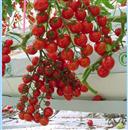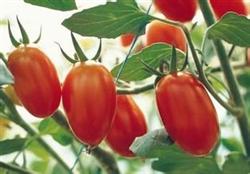Six steps of high-yield cultivation of virgin fruit

1. Timely throwing seedlings to give full play to the advantages of early growth and rapid development. There is less soil for seedling tray, so the earlier the seedlings can be thrown, the better, on the premise that the seedlings can be picked up without the soil scattering. Generally, 15-20 days after early sowing and 8-10 days after late sowing, seedlings can be thrown about three leaves. The shorter the seedling, the faster the seedling recovery growth, can give full play to the advantages of throwing seedlings early growth and rapid development, high yield. Generally speaking, it is more appropriate to sow seedlings in the middle and late March. Second, control the density of seedling throwing, reduce the occurrence of diseases and insect pests and enhance the ability of lodging resistance. In recent years, the number of throwing seedlings per mu in various places has generally maintained 40-50 plates, about 18,000 - 20,000 holes, which is determined according to the transplanting density, ignoring the characteristics that throwing seedlings grow faster, more and better than transplanting. Therefore, it often causes undesirable phenomena such as excessive density, ineffective tillers that cannot be controlled, many diseases and insect pests, and lodging. To change this phenomenon, the fundamental way is to control the throwing density, throwing 30-35 seedlings per mu field (25-30 seedlings in factories), about 1.2-1.5 thousand holes is good, that is, saving seeds and increasing yield. Third, master the throwing skills to reduce the shortage of seedlings. Before seedling throwing, the field should be raked flat and divided into rows (2- 3 meters wide for each row), and the seedlings should be quantified (divided into seedlings according to rows or by area). When throwing seedlings, 70% of seedlings should be thrown first, and the remaining 30% seedlings should be thrown into the blank space. Pay attention to walking around. Do not step on the place where the seedlings are thrown, so as to prevent the footprints from being too deep and the seedlings sinking into the footprints and drowning. In addition, harrow a day in advance, let the soil sink after throwing seedlings, the effect is better. If throwing seedlings is uneven, 4-6 days after throwing seedlings, when all seedlings are standing, then make up seedlings, it is best not to throw them immediately. 4. Apply sufficient base fertilizer and topdressing in time. Applying enough basal fertilizer is the foundation of rice production, and throwing seedlings is no exception. In the field, 40%-60% fertilizer can be applied, organic fertilizer and phosphate fertilizer pre-retting a month better effect. Organic fertilizer, phosphate fertilizer and ammonium bicarbonate should be applied when harrowing, urea should be applied before seedling throwing. Tillering fertilizer should be applied early rather than late, 5, 10, 15 days after seedling throwing, combined with urea and potassium fertilizer. Tapping fertilizer was applied once 35 and 55 days after seedling throwing, and compound fertilizer and potassium fertilizer were combined. V. Timely drainage and sun-drying of fields to prevent the occurrence of diseases and insect pests and lodging. After 25-30 days of seedling throwing, drainage and sunning should be started to increase the air in the soil and improve the root activity of rice, which can reduce the occurrence of diseases and insect pests and increase the ability to resist falling. The time of drainage and sunning depends on the weather. It is generally required that people walk in without footprints, and keep dry and wet later. VI. Do a good job in pest control to ensure high and stable yield. Plant high-quality rice, pest control is the key, especially high-quality rice disease resistance is often not as good as hybrid rice, special emphasis should be placed on disease control. Tian An was sprayed to prevent sheath blight when draining and sunning fields, and Fuji No. 1 and Kewenjing were sprayed to prevent panicle neck blast at break stage and full heading stage to ensure high and stable yield.
- Prev

Tomato and its efficient cultivation techniques
1 cherry fruit also known as grape tomato. In addition to containing all the nutrients of tomatoes, its vitamin content is 1.7 times that of ordinary tomatoes. The nutritional value of cherry tomatoes is better than that of ordinary tomatoes. Cherry fruit contains glutathione and lycopene and other special substances, these substances can promote human...
- Next

Prevention and control measures of tomato diseases and insect pests
Its cultivation techniques are as follows: 1. Timely sowing. This variety is suitable for autumn sowing, and can be planted at the end of May and early June, planted in July, and harvested in September. In order to prevent seeds from spreading with poison, seeds should be disinfected before sowing. The seeds should be wrapped with gauze and soaked in 15% trisodium phosphate aqueous solution for 10 ~ 20 minutes.
Related
- Moge, come on! The staff of the peasant association in the producing area of cantaloupe were frightened when the crowd gathered.
- Causes and Solutions of low Fruit setting rate of Apple
- Symptoms and control measures of passion fruit virus disease
- Fruit growing lesson: how do apple orchards keep high yields?
- Can you build orchards in the mountains? What are the pros and cons?
- How to manage the coloring period of Crisson grape?
- This paper introduces the processing technology of two kinds of fig products.
- How much is a month for retired teachers in rural areas by 2020?
- How can strawberry planting increase sugar content? We should pay attention to management in many aspects.
- What are the cultivation techniques on how to improve the yield of golden fruit?

